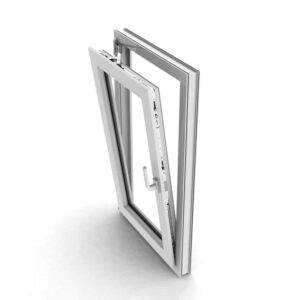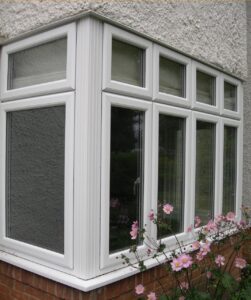Ensuring the safety of young children in the home is a top priority for parents and caregivers. One often overlooked area that poses a significant risk to children is unsecured windows and sliding doors. In this comprehensive guide, we will provide you with essential tips and techniques for childproofing your windows and sliding doors to prevent accidents and injuries. From installing safety locks and guards to teaching your children about window and door safety, we will cover everything you need to know to create a secure environment for your little ones.
Key Takeaways:
- Window and sliding door safety: Childproofing your windows and sliding doors is essential to prevent accidents and keep young children safe.
- Proper window locks and guards: Installing robust locks and guards on windows and sliding doors can restrict a child’s access and reduce the risk of falls.
- Use of safety nets or window film: Adding safety nets or window film can provide an extra layer of protection to prevent children from falling out of windows.
- Cordless window coverings: Opt for cordless window coverings to eliminate the risk of strangulation for young children.
- Regular maintenance and checks: Regularly inspecting and maintaining window and sliding door safety measures is crucial to ensure their effectiveness in childproofing.


Preliminary Steps
Identifying Windows and Doors that Need Childproofing
Before you begin childproofing your windows and sliding doors, it’s essential to assess which ones pose a potential risk to your child’s safety. Look for windows and doors that are within reach of children, have easy-to-open mechanisms, or are located on upper floors and balconies. These are the areas that require immediate attention to prevent any accidents from occurring.
Take note of any windows or doors that are in high traffic areas or used frequently by your family. These are also prime candidates for childproofing as they have a higher chance of being left open or unlocked, increasing the risk of accidents. By identifying these areas, you can prioritise your childproofing efforts and ensure that the most vulnerable areas are secured before any accidents occur.
Factors to Consider Before Starting
Before you start childproofing your windows and sliding doors, there are several factors to consider to ensure that you are taking the necessary precautions. Firstly, assess the material and design of your windows and doors, as different types may require specific childproofing measures. Additionally, consider the age and behaviour of your child, as this will impact the level of security needed in your home. Any pre-existing safety hazards in your windows and doors should also be taken into account before beginning the childproofing process.
It’s important to evaluate the impact of childproofing on the functionality and accessibility of your windows and doors. Any irreversible changes should be carefully considered, as they may affect the overall usability of these fixtures. By carefully weighing these factors, you can ensure that your childproofing efforts are effective without compromising the functionality of your windows and sliding doors.

Childproofing Techniques for Windows
When it comes to childproofing your windows, there are a few key techniques that can make a big difference in keeping your little ones safe. From installing window guards and stops to applying safety films, taking the time to childproof your windows is essential for creating a safe environment for your children.
Tips for Installing Window Guards and Stops
When it comes to installing window guards and stops, it’s important to make sure they are securely attached to the window frame and can withstand strong pressure. Ensure that the distance between bars or slats is narrow enough to prevent a child from squeezing through. Remember to check for any sharp edges that could be a potential hazard. Recognizing the importance of proper installation and maintenance is crucial for effective childproofing.
Selecting and Applying Safety Films
One effective method for childproofing your windows is by selecting and applying safety films. Safety films are designed to hold glass together in the event of breakage, preventing shards from causing harm. When selecting a safety film, look for one that has been tested and certified for its strength and durability. Proper application is key to ensuring the effectiveness of the safety film in protecting your windows.
It’s essential to keep in mind that safety films are not designed to make glass unbreakable, but rather to minimize the risk of injury from shattered glass. The addition of safety films can provide an extra layer of protection for your windows, creating a safer environment for your children.
Locks and Latch Adjustments
Another important aspect of childproofing your windows is making adjustments to locks and latches. Ensuring that locks and latches are functioning properly is essential in preventing children from opening windows and potentially falling. Consider installing keyed locks or latch guards to further secure your windows and provide peace of mind.
Recognizing the importance of regular maintenance and checking the functionality of locks and latches is crucial for effective childproofing. By taking these simple yet crucial steps, you can significantly reduce the risk of accidents and create a safer environment for your children.
Childproofing Methods for Sliding Doors
When it comes to childproofing your home, ensuring the safety of sliding doors is crucial. Children are naturally curious and may attempt to open or play with sliding doors, posing a potential risk of injury. Implementing effective childproofing methods for sliding doors is essential to keeping your little ones safe.
For a comprehensive guide on how to secure your sliding glass door, click here for detailed instructions on safeguarding your sliding door to prevent unwanted entry and ensure the safety of your children.
How-To Secure Sliding Door Locks
Securing sliding door locks is one of the key steps in childproofing your sliding doors. Make sure to check for any existing locks and assess their functionality. It is important to install additional locks at a higher level to prevent children from reaching and unlocking the door. Consider using a key or padlock to further secure the doors, particularly at night or when the doors are not in use. Regularly check the locks for any signs of wear and tear, and replace them if necessary to maintain optimal security.
Installing Sliding Door Safety Bars
One effective childproofing method for sliding doors is to install safety bars. These bars provide an extra layer of protection by preventing the doors from being forced open. It is important to install safety bars at a height that cannot be easily reached by young children. When choosing safety bars, opt for strong and durable materials that can withstand pressure and ensure maximum security. Ensure that the safety bars are securely fitted and regularly check them for any signs of damage or looseness.
For more information on installing sliding door safety bars and other childproofing methods, consult a professional for expert advice on safeguarding your home and protecting your children from potential hazards.
Maintaining Safety Measures
Regular Maintenance Tips
Ensuring the security and safety of your windows and sliding doors requires regular maintenance. Here are some important tips to keep in mind:
- Inspect all locks and latches for any signs of wear or damage.
- Keep the tracks of sliding doors clean and free from debris to ensure smooth operation.
- Check the condition of window screens and repair any tears or holes to keep pests out.
The regular maintenance of your windows and sliding doors is crucial in preventing potential safety hazards.
Educating Your Child for Additional Safety
It is important to educate your child about the potential dangers associated with windows and sliding doors. Here are a few tips to help them understand the importance of safety:
- Teach them to never play near windows or sliding doors.
- Show them how to properly operate locks and latches to keep windows and sliding doors secure.
- Discuss the dangers of climbing on or leaning against windows and doors.
By educating your child about safety measures, you can prevent potential accidents and promote a secure environment for your family.
Childproofing Your Windows and Sliding Doors – A How-To
Childproofing your windows and sliding doors is crucial in ensuring the safety of your little ones at home. By following the tips and techniques outlined in ‘5 Ways to Childproof Your Windows – ~’, you can effectively minimise the risk of accidents and injuries related to open windows and sliding doors. From installing safety locks and guards to keeping furniture away from windows, these measures are a must for any household with young children. It’s important to be proactive in protecting your kids from potential hazards, and these simple yet effective methods can go a long way in giving you peace of mind. For more information on childproofing your windows, visit www.stanekwindows.com.
Childproofing Your Windows and Sliding Doors – A How-To
Q: Why is it important to childproof windows and sliding doors?
A: It is important to childproof windows and sliding doors to prevent accidental falls and keep young children safe from potential hazards.
Q: What are the common childproofing methods for windows and sliding doors?
A: Common childproofing methods include installing window guards, locks and latches, safety netting, and using window stops to limit how far they can open.
Q: How can I assess the safety of my windows and sliding doors?
A: You can assess the safety of your windows and sliding doors by checking for any loose or broken parts, ensuring that locks and latches are secure, and removing any objects that could be used for climbing.
Q: Are there regulations or standards for childproofing windows and sliding doors?
A: Yes, there are regulations and standards for childproofing windows and sliding doors, such as requirements for window guards in certain buildings and specific safety standards for childproofing products.
Q: What are some additional safety tips for childproofing windows and sliding doors?
A: Additional safety tips include supervising children around windows and doors, educating them on the dangers of leaning or playing near them, and teaching them how to operate locks and latches safely.













